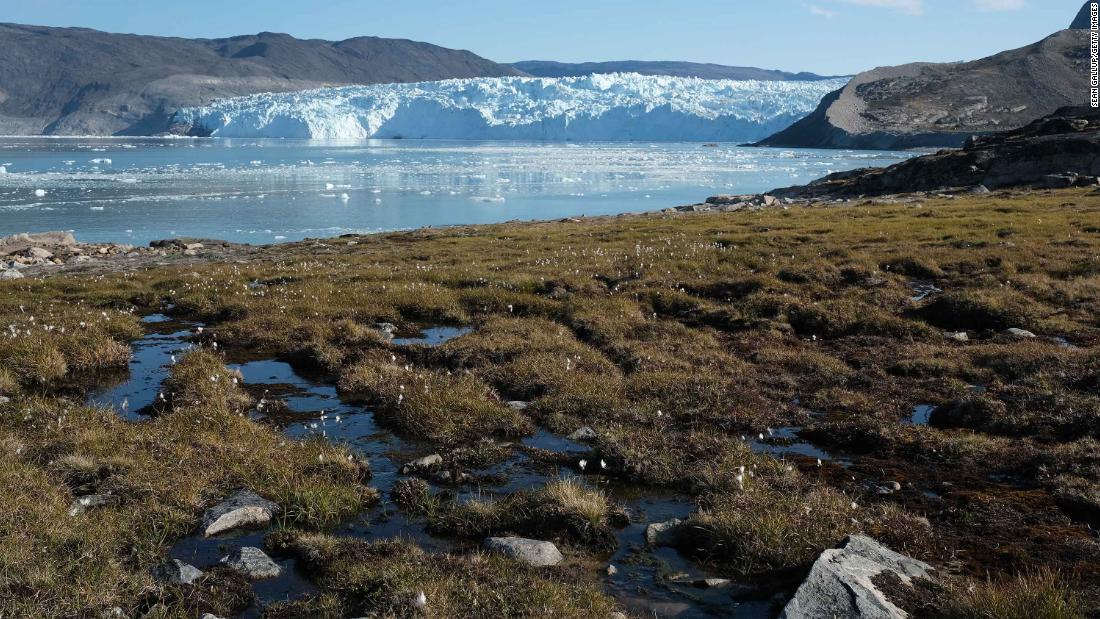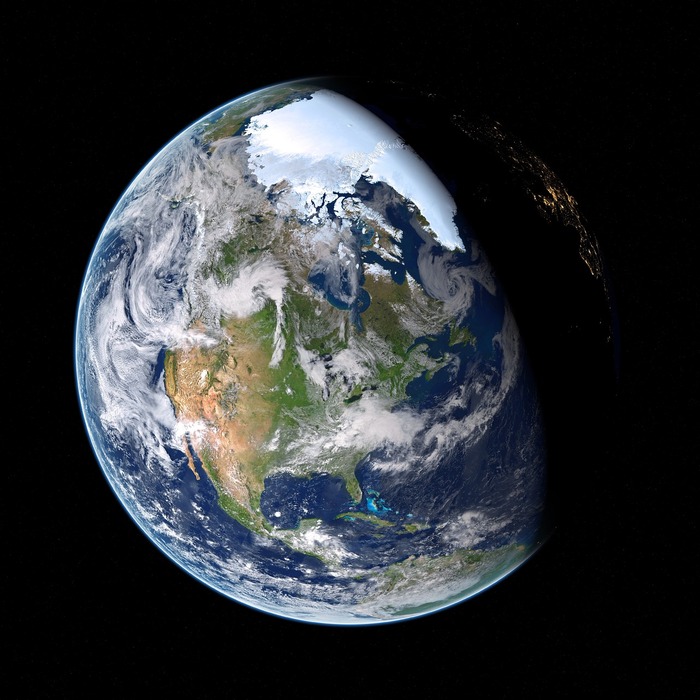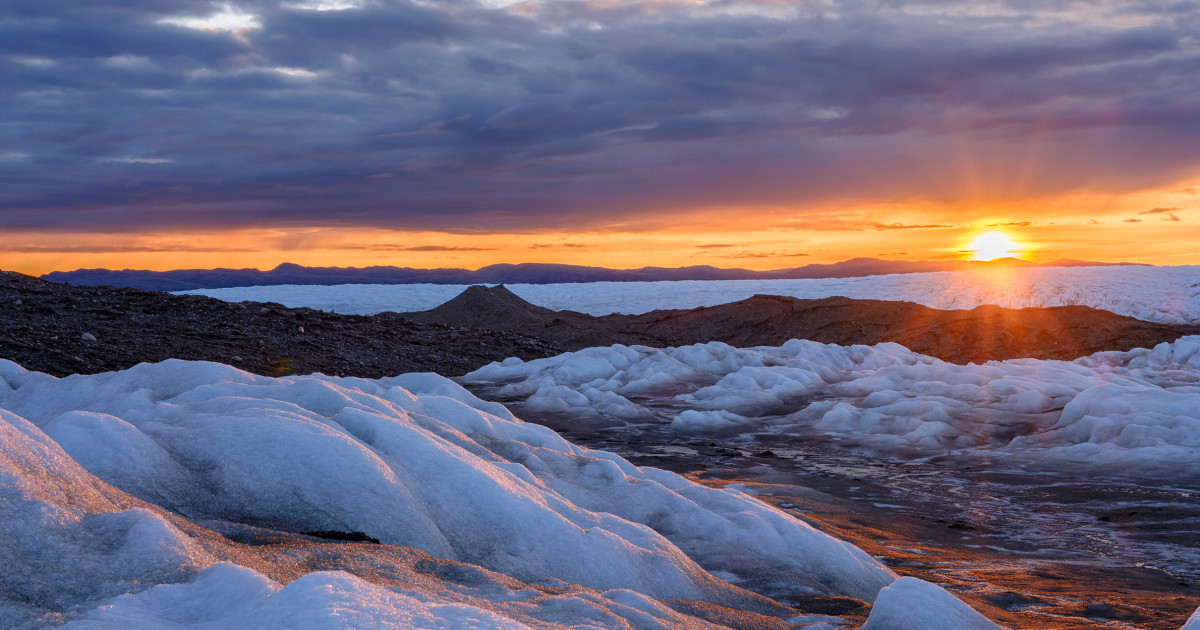Meltwater runs down a layer near the Sermeq Avangnardleq Glacier in Greenland in August 2019.
(CNN) -
We've known for some time that the Greenland ice sheet is melting at an alarming rate. Greenland lost more ice in the past year than in any other year on record, and the thaw has accelerated rapidly since the 1990s. .
But in the context of Earth's more than 4.5 billion years of history, melting in a year or even a few decades is equivalent to a blink of an eye.
Science is not entirely clear if the rapid disintegration we see in Greenland today compares to anything else that has happened in the past.
Now, a new study published in the journal
Nature
offers some answers, and the news is not good: the rate of thaw we are seeing today already threatens to exceed anything Greenland has experienced in the last 12,000 years.
Thaw trends in Greenland
Over the past two decades, the Greenland ice sheet has melted at a rate of approximately 6.1 trillion tons per century.
This rate had only been reached during a warm period that occurred between 7,000 and 10,000 years ago.
"We know there is a lot of variability from year to year, so what we were interested in doing is capturing the most significant trends over decades and maybe even a century," said Jason Briner, professor of geology at the University of Buffalo and lead author of the study.
"And when you do that, and you think about the direction Greenland is taking in this century, it is quite clear that we are in quite anomalous times," he explained.
The big difference between now and then?
The influence of human activity.
LEE: Reaching net zero emissions to control climate change could cost US $ 2 trillion a year, according to a report
The melting observed today is mainly driven by greenhouse gas emissions.
On the other hand, the warming that occurred thousands of years ago was the result of natural climate variability, Briner said.
The future in Greenland depends on humans
It is up to us how much Greenland melts in the future.
In a scenario where humans continue to increase concentrations of heat-trapping gases in the atmosphere, Greenland's ice loss could reach unprecedented levels.
More than 35.9 trillion tons of ice could potentially be lost by the end of this century.
Right now, Briner says current thaw rates closely follow this worst-case scenario.
The Greenland ice sheet is melting as fast as at any time in the past 12,000 years, according to a new study.
However, if the world decides to cut emissions enough for global warming to peak around 2050, ice losses this century could be limited to 8.8 trillion tons.
This is still a huge amount, but only enough to raise sea level by about 1 inch.
This compared to the approximately 10 cm extra we can expect in a high emissions scenario.
"Humanity has the knobs, and we can turn those knobs to decide what the ice sheet will do," he said.
What happens to the Greenland ice sheet and others around the world will determine what the future holds for the millions of people who live along the world's shores.
The thaw in Antarctica
In terms of its potential to raise sea levels, Greenland is the second most important ice sheet in the world, after Antarctica.
The Greenland ice sheet contains enough water to raise global sea level by 7.3 meters.
Over the past 26 years, Greenland's melt water has raised sea levels by about 1 cm.
It is currently the world's largest contributor to sea level rise.
The melting of Antarctica, on the other hand, is currently responsible for 20% to 25% of global sea level rise.
However, it is likely to overtake Greenland as the largest global contributor.
LEE: The ice sheets that support two great Antarctic glaciers are breaking up: why is it so serious?
Antarctica contains enough water to raise sea levels by about 200 feet, and scientists have recently discovered alarming vulnerabilities in some of its most important glaciers.
A report last year by the UN Intergovernmental Panel on Climate Change warned that sea level rise is likely to exceed 90 cm by the end of this century if greenhouse gas emissions are not controlled.
Rising sea levels are already causing problems in many coastal areas.
And for places like New York and Shanghai, a rise of 90 cm or more in sea level could spell disaster.
Thaw costs
Another recent study found that rising sea levels could cost the world economy $ 14.2 trillion in lost or damaged assets by the end of the century.
And it could expose up to 287 million people to episodic flooding, up from 171 million today.
"Clearly, sea level rise due to melting ice 12,000 years ago affected people too, but those people were much more dispersed and did not have parking lots or modern integrated water systems that served millions of people," Richard said. Alley, a professor of geosciences at Penn State University, who was not involved in the study published by Nature.
"These results say that human decisions about our energy systems are really important in deciding how much sea level rise we face from melting Greenland ice," he added.
Thaw Greenhouse gases Greenland














